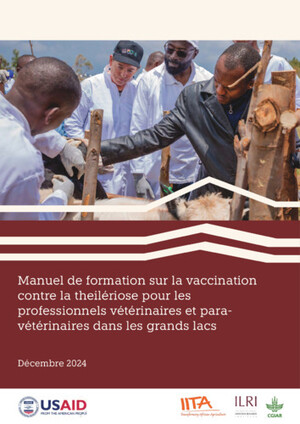
Investigating volatile semiochemical production from Bos taurus and Bos indicus as a novel phenotype for breeding host resistance to ixodid ticks
Abstract
Ticks and tick-borne diseases cause significant loss in livestock production with about 80% world's cattle at risk. The cost of chemical control is high and there is an ever-increasing tick resistance to chemical acaricides. Genetic selection as alternative long-term control strategy is constrained by laborious phenotyping using tick counts or scores. This study explored the use of host volatile semiochemicals that may be attractants or repellents to ticks as a phenotype for new tick resistance, with potential to be used as a proxy in selection programmes. Approximately 100 young cattle composed of Bos indicus and Bos taurus were artificially infested with 2,500 African blue tick, Rhipicephalus decoloratus larvae, with daily female tick (4.5 mm) counts taken from day 20 post-infestation. Volatile organic compounds were sampled from cattle before and after tick infestation by dynamic headspace collection, analysed by high-resolution gas chromatography (GC) and subjected to multivariate statistical analysis. Using 6-day repeated measure analysis, three pre-infestation GC peaks (BI938 - unknown, BI966 - 6-methyl-5-hepten-2-one and BI995 – hexyl acetate) and one post-infestation GC peak (AI933 – benzaldehyde / (E)-2-heptenal) were associated with tick resistance (P < 0.01 and P < 0.05 respectively). The high correlation coefficients (r = 0.66) between repeated records with all volatile compounds support the potential predictive value for volatile compounds in selective breeding programmes for tick resistance in cattle.
Citation
Matika, O., Foster, S., Githaka, N., Owido, G., Ngetich, C., Mwendia, C., Brown, H., Caulfield, J., Watson, K., Djikeng, A. and Birkett, M. 2023. Investigating volatile semiochemical production from Bos taurus and Bos indicus as a novel phenotype for breeding host resistance to ixodid ticks. Ticks and Tick-borne Diseases 14(5): 102200.










